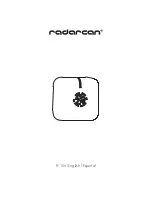
GLASS DRILL InStRuctIon MAnuAL
GLASS-cHEK PRo oPERAtInG MAnuAL
crlaurence.com
c.R. Laurence co., Inc.
•
2503 E. Vernon Ave., Los Angeles, cA 90058
•
1.800.421.6144
•
crlaurence.com
SEPtEMBER 2020
P. 17
TROubLEshOOTING GuIdE (CONT.)
10. for operating in hot temperatures:
keep the unit in a cooler environment until you are ready to take the readings. The meter will record accurate readings
until the point the electronics reach the temperature above the operating range. depending on the degree of heat, this
will allow for several readings to be taken.
11.
dO NOT sTORE ThE METER IN yOuR vEhICLE
. TEMPERATuREs INsIdE vEhICLEs COMMONLy ExCEEd
ThE MAxIMuM ALLOWEd TEMPERATuRE IN suMMER MONThs, ANd ALsO dROP bELOW MINIMuM ALLOWEd
TEMPERATuREs IN WINTER MONThs. CARRy yOuR METER INdOORs EvERy dAy.
Important Safety Consideration:
The GLAss-ChEk family of glass thickness and air space meters use a Class 2M
laser to take its measurements. do NOT push the power button and point the
instrument laser at a persons’ eyes. Always check the other side of the window
being tested to ensure that no one will be looking directly into the laser.
sPECIfICATIONs
Power source:
9 volt alkaline battery (NEdA 1604A) only
Physical dimensions:
3.5” x 5.5” x 1.7 inch (89 x 140 x 43 mm)
Weight:
0.75 pounds
Maximum Laser Output:
<1mW (2M laser product)
Laser Wavelength:
650 - 680 nm
storage Temperature:
+14 to 140 degrees f (-10 to +60 degrees Celsius)
Operating Temperature:
+32 to 104 degrees f (0 to +40 degrees Celsius)
display: Graphic
Accuracy:
Glass: 0.008 inch (0.2 mm)
Air space: 0.012 inch (0.3 mm)
This product complies with IEC 60825-1 and fdA regulation 21 CfR 1040.10. The thickness tolerance is calibrated to NIsT
traceable standard No. 821/268634-03.
GLAss ThICkNEss RANGE
Minimum Glass Thickness Allowed:
0.080 inch or 2.0 mm
Minimum Air space Allowed:
0.187 inch or 4.7 mm
Glass Thickness Allowed for Low-E readings:
up to 0.5 inch or 12.7 mm
Troubleshooting Guide
Page 14
If you are having difficulty obtaining an accurate measurement, please follow these steps:
1)
manual. Make sure you are testing the BOTTOM CENTER of the window.
2)
Ensure that the Glass-Chek ELITE is placed flat against the glass surface and that you are testing
at one of the four optimal locations detailed on Page 5. The meter must be used with the surface
opposite the Power button against the window. Using the small end surface of the unit or tilting the
unit away from the surface will give improper results.
3)
Clean the glass surface or move to a cleaner area of the glass.
4)
Remove dust particles from the two lenses on the back of the Glass-Chek ELITE.
To clean the lenses:
WE STRONGLY RECOMMEND USING CLEAN COMPRESSED AIR ONLY TO
CLEAN THE LENSES.
However, if there are fingerprints or other smudge marks on the lenses that can
not be removed in any other way, a lint free cloth can be used to wipe off the smudges.
5)
If only a partial reading occurs, move to another location on the glass or take a reading from the other
side of the window.
6)
Be sure nothing is touching the glass while taking measurements. Placing your hand or any metallic object against the
lite of glass you are testing may cause the Glass-Chek ELITE to yield improper Low E results. Remove your hand or
object. Do not touch any part of the glass with your hand while taking readings.
7)
Verify the operating temperature range
8) If measurements seem to take a long time:
The amount of time it takes the GC3200 to complete a measurement will vary by application. This does not mean your
meter is defective, it simply takes varying amounts of time depending on the application. Be sure to hold the meter steady
against the window until the results are displayed. Measurements that will take longer include: Laminated Glass, Thick
Glass, Dark Glass, and Multi-Laminate Glass.
9) For operating in cold temperatures:
a)
Keep the unit in a warmer environment until you are ready to take the readings. The meter will record accurate
readings until the point the electronics reach the temperature below the operating range. Depending on the degree of
coldness, this will allow for several readings to be taken.
b)
Carry the meter close to your body or in some other manner that will keep the unit near a warmer temperature.
c)
When temperature is only slightly below the temperature range, operate the unit several times repeatedly in attempt to
warm up the laser.
9) For operating in hot temperatures:
Keep the unit in a cooler environment until you are ready to take the readings. The meter will record accurate readings
until the point the electronics reach the temperature above the operating range. Depending on the degree of heat, this will
allow for several readings to be taken.
TEMPERATURES INSIDE VEHICLES COMMONLY EXCEED
THE MAXIMUM ALLOWED TEMPERATURE IN SUMMER MONTHS, AND ALSO DROP BELOW MINIMUM ALLOWED
TEMPERATURES IN WINTER MONTHS. CARRY YOUR METER INDOORS EVERY DAY.
Be sure you are following the guidelines for most accurate results outlined on Page 5 of this
10)
DO NOT STORE THE METER IN YOUR VEHICLE.
Important Safety Consideration:
The GLASS-CHEK family of glass thickness and air space meters use a Class 2M
laser to take its measurements. Do NOT push the power button and point the
instrument laser at a persons’ eyes. Always check the other side of the window
being tested to ensure that no one will be looking directly into the laser.




































